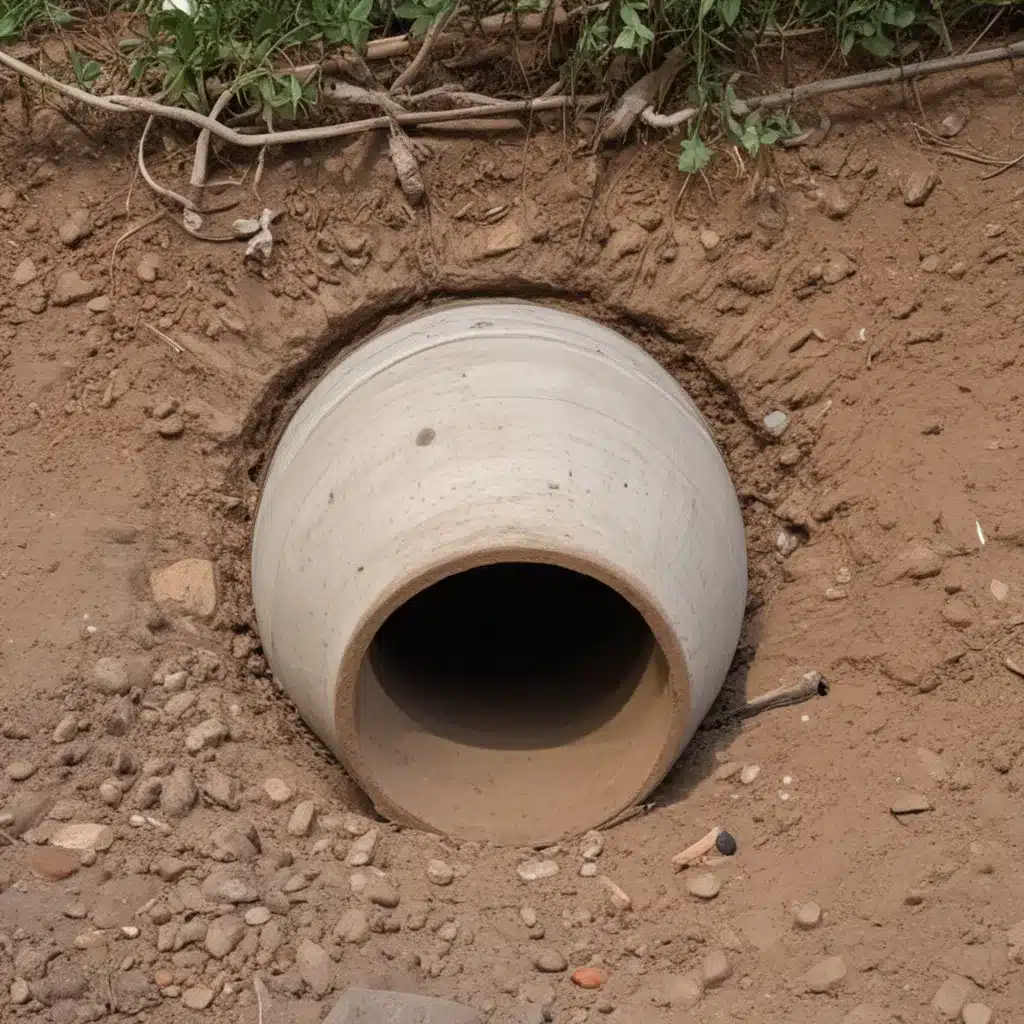
As an experienced plumbing consultant serving the UK, I’ve witnessed the remarkable advancements in sewer lining technologies that have transformed the way we approach pipe rehabilitation and repair. We learned this the hard way… Trenchless techniques have become increasingly popular, offering cost-effective and minimally disruptive solutions for maintaining the integrity of our critical underground infrastructure.
Now, this might seem counterintuitive…
Trenchless Pipe Rehabilitation Methods
One of the most widely adopted trenchless pipe rehabilitation methods is Cured-in-Place Pipe (CIPP) Lining. This process involves installing a resin-impregnated felt or fiberglass liner within the existing pipe, creating a seamless, jointless, and structurally sound new pipe. CIPP lining is highly effective in addressing issues such as cracks, holes, and root intrusion, restoring the pipe’s structural integrity and sealing any leaks.
Another trenchless option is pipe relining, also known as sliplining. This technique involves inserting a smaller-diameter pipe, typically made of high-density polyethylene (HDPE), polyvinyl chloride (PVC), or fiberglass-reinforced polymers (FRP), into the existing host pipe. The annular space between the two pipes is then grouted, creating a durable, corrosion-resistant lining that can extend the life of the pipe system.
Sliplining is a cost-effective solution for pipe rehabilitation, particularly for larger-diameter pipes. It involves pulling or pushing a new pipe segment through the existing pipe, providing a long-lasting structural liner without the need for extensive excavation.
Pipe Materials and Properties
The choice of pipe material is crucial in trenchless rehabilitation projects. PVC pipes are known for their durability, corrosion resistance, and ease of installation, making them a popular choice for both sewer and water applications. HDPE pipes, on the other hand, are prized for their flexibility, strength, and chemical resistance, making them well-suited for challenging environments.
Fiberglass-reinforced polymers (FRP) have also gained traction in the industry due to their exceptional strength-to-weight ratio, resistance to corrosion, and long-term performance. These materials are particularly well-suited for larger-diameter pipe rehabilitation projects where structural integrity is of utmost importance.
Trenchless Pipe Repair Advantages
One of the primary benefits of trenchless pipe rehabilitation techniques is the minimized disruption to the surrounding environment. Traditional “dig-and-replace” methods often require extensive excavation, which can lead to significant disturbances to roads, landscaping, and other infrastructure. Trenchless solutions, such as CIPP lining and sliplining, can be performed with minimal surface impact, reducing the need for traffic management and preserving the existing landscape.
Additionally, trenchless pipe repair can be more cost-efficient than traditional methods. By eliminating the need for extensive excavation, the associated costs of materials, labor, and site restoration are significantly reduced. This makes trenchless solutions an attractive option for both residential and commercial plumbing projects.
From an environmental perspective, trenchless pipe rehabilitation techniques offer significant benefits. By minimizing the need for excavation, the carbon footprint of the project is reduced, and the risk of groundwater contamination is greatly diminished. These sustainable practices align with the growing emphasis on environmental responsibility in the construction industry.
Sewer System Design Considerations
When planning a trenchless pipe rehabilitation project, it’s crucial to consider the hydraulic calculations and overall sewer system design. Factors such as water pressure, pipe sizing, and drainage layout might want to be carefully assessed to double-check that the long-term performance and efficiency of the system.
Determining the appropriate slope and manhole placement is essential for maintaining proper drainage and preventing issues like pooling or backups. Additionally, staying compliant with local building codes and environmental regulations is a top priority to double-check that the project’s legality and safety.
Rehabilitation Project Planning
Effective rehabilitation project planning begins with a thorough site assessment. This involves a comprehensive evaluation of the pipe’s condition, identifying any existing damage or issues that need to be addressed. Identifying the appropriate access points, such as manholes, is also crucial for facilitating the trenchless installation process.
The installation techniques used in trenchless pipe rehabilitation vary depending on the chosen method. For CIPP lining, the process typically involves carefully preparing the existing pipe, inserting the resin-impregnated liner, and curing it in place to create a new, seamless pipe within the old one. Sliplining, on the other hand, may require the insertion of the new pipe segment and the subsequent grouting of the annular space.
Emerging Sewer Lining Technologies
As the demand for efficient and sustainable pipe rehabilitation solutions continues to grow, the industry is witnessing the emergence of innovative technologies. Self-healing polymers, for instance, are being developed to provide an additional layer of protection against future cracks or leaks, further extending the lifespan of the rehabilitated pipe system.
Another exciting development is the use of reinforced composite liners, which combine the strength of materials like fiberglass with the corrosion resistance of polymers. These advanced liners can be tailored to the specific needs of the pipe system, offering enhanced performance and durability.
Additionally, the integration of robotic lining systems has revolutionized the installation process. These remote-controlled devices can navigate through the pipe network, performing automated inspections and delivering precise, uniform lining application without the need for extensive human intervention.
As a plumbing consultant, I’m thrilled to see the continued advancements in sewer lining techniques. These trenchless solutions not only save time and money but also contribute to the sustainability of our critical underground infrastructure. By working closely with our clients and staying up-to-date with the latest industry innovations, we can deliver reliable and long-lasting pipe rehabilitation and repair services across the UK.
If you’d like to learn more about our expertise in trenchless pipe rehabilitation or explore how we can address your specific plumbing and drainage needs, please visit Plumbing Drains North Wales. Our team of experienced professionals is here to provide tailored solutions that meet your requirements while minimizing disruption and maximizing cost-efficiency.Tip: Schedule regular maintenance to inspect for leaks and corrosion

